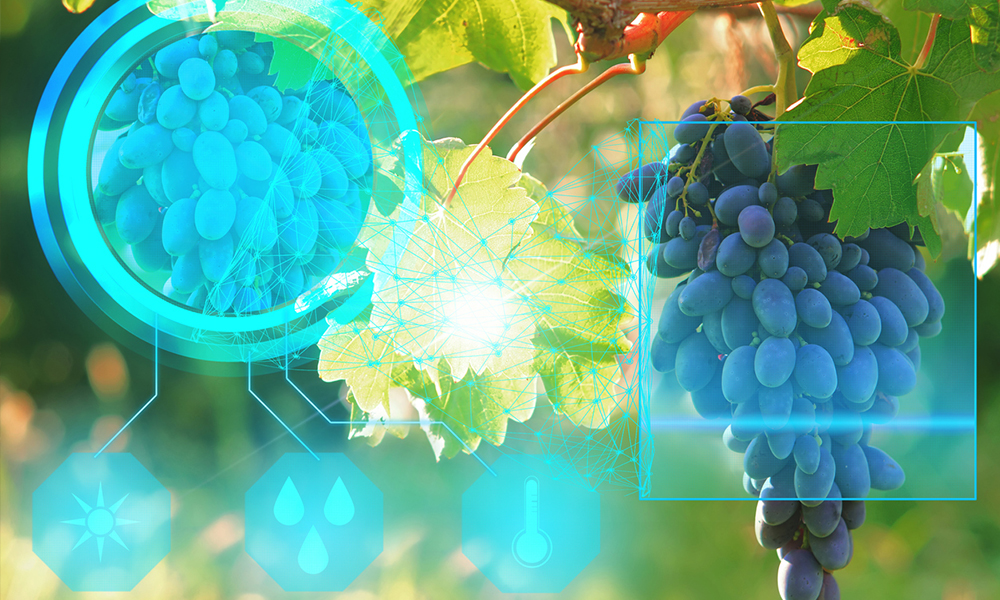Cloud
Helping farmers weather climate change
December 9, 2020
Categorized: Cloud
Share this post:
The drought and the bushfires ravaged the farming sector. Can technology help them adjust to increased weather volatility?
Nearly a quarter of the agricultural economy was lost in the recent long drought, as crops withered and stock starved. It felt like a once in a lifetime event, but from an economic standpoint, the Reserve Bank of Australia found it’s far too common. A similar drop in output was experienced in the millennium drought in the early 2000s.
Another 7 per cent of agricultural production went up in smoke as the hot, dry conditions turned the east coast into a tinderbox. Even those directly out of the path of the flames couldn’t escape the impact of the thick smoke that blanketed parts of the country.
In March this year, Tim Kirk, chief executive and chief winemaker at boutique winery Clonakilla, surveyed a shattering scene. Teams of workers were picking bunches at his vineyard at Murrumbateman, just outside Canberra, but the grapes weren’t being loaded into buckets to be crushed, they were being dropped at the foot of the vines. Instead of going into the winery’s famous shiraz viognier, retail $110, each $10 bunch would become very expensive compost.
The grapes had been exposed to the thick smoke that wafted over the vineyard from the bushfires to the south and east during that terrible summer. As the smoke hung over the vineyard, the grapes took the smoke into their skins, rendering them undrinkable. The equivalent of 15,000 to 20,000 cases were destroyed, costing Clonakilla millions.
“We’re farmers, we live and die by the weather,” Kirk said. “We accept that you are going to have your good seasons and your bad seasons but this one has been really tough.”
The drought and the fires elevated climate change to a national conversation and put to bed any lingering political issues that surrounded it. It was never doubted by Tim Kirk.
“A winemaker is exactly the person to ask about climate change because not only do we pick fruit every year, but any winemaker worth their salt will be noting the day of picking and the sugar content.
“Over the last 40 years we’ve been making wine here at Clonakilla, the season’s becoming earlier and earlier and earlier. It was the family tradition 40 years ago to pick our riesling in the first weekend in May but now we are seeing the same level of ripeness early in March or even late February.”
It’s not just the seasons coming sooner that is causing farmers to rethink their crops, it is the variability of the weather that has to be dealt with.

“Australia has the most volatile climate in the world,” said Michael Wang, a senior meteorologist at IBM’s The Weather Company. Via their cloud-based weather solutions, applying artificial intelligence to geospatial-temporal data from satellites and weather observations and forecasts, IBM is hoping to help farmers adapt to climate variability.
“The year to year variation is huge,” Wang said. “So if we can leverage that information for a seasonal outlook, for example, a lot of better decisions can be made to mitigate risk and improve productivity.”
It’s not just seasonal conditions that can be addressed. The ability to respond optimally to weather conditions is critical for farming which is why IBM also provides more granular and localised forecasting to improve the productivity of farms. One client is US wine giant E&J Gallo, one of the largest winemakers in California.
With similar water stresses to Australia, the firm was looking to boost grape yields while reducing water usage. By applying AI to weather, satellite and remote sensor data to help identify conditions in the vines and atmosphere and tailor decision making accordingly, the winemaker was able to help improve yield by 30 per cent while reducing water usage by 25 per cent.
“We did this across a very fine grid with very high spatial resolution in order to apply the irrigation in different areas of the vineyard, not uniformly across the board, but targeted based on weather data and soil moisture levels” Wang said. “It helped save water and improve yield. And overall quality improved because we reduced variability of the vineyard.”

Better weather data and insights can assist in other areas of farm operation, such as when to apply fertiliser and pesticides or what crops to plant. With more accurate weather data, significant input costs can potentially be saved.
It’s not just about saving costs. With a growing population globally, extracting food more efficiently will be critical to avoid further deforestation.
In Australia, climate change is also threatening the sustainability of the farming sector according to Charlie Prell, a grazier and a founder of Farmers for Climate Action. At his property in the Southern Highlands of NSW, they had to reduce their stock by 60 per cent during the drought. He said that conditions are only getting trickier.
“Things are changing. It’s not necessarily getting hotter, but getting more volatile. it’s getting hotter, it’s getting colder, it’s getting drier, it’s getting wetter all at the same time,” Prell said. “It makes it harder and harder to run a sustainable farm because the weather’s all over the place.”
Prell believes that consumers will soon start to realise the importance of maintaining a strong farming sector.
“People are already complaining about the price of meat. Not vegetables yet, or fruit but they will when food becomes scarcer, becomes more expensive. Climate change is going to exacerbate supply and demand,” he said.
Understanding the weather, and better accounting for it, in both the short and long term will help balance that equation.
Originally published in The Australian
Summer’s Coming – Get ready to ride the wave of post-lockdown optimism
Author Ross Farrelly, Director, Data Science and Artificial Intelligence, IBM A/NZ You can feel it in the air. Summer’s on its way and there’s a spring in our step. In October, business confidence in NSW leapt by 42pts in September, while Victoria climbed by 16pts.[i] But it’s not just the change of season that is […]
Why IBM is upskilling 30 million people for the digital era
Author: Katrina Troughton, Managing Director IBM A/NZ According to the World Economic Forum, the inability of employers to find enough skilled workers could cost the global economy US$11.5 trillion in forgone GDP growth by 2028. A high 87 percent of executives also report suffering from the issue. Here in Australia, the Australian Computing Society and Deloitte have […]
Unleashing regional Australia’s potential with IBM Cloud Satellite
Author: Jason Price, Vice President IBM Technology A/NZ The current focus on – and migration – to regional Australia has been a long time coming. As working from home became the norm last year, many Australians quickly learned that they could work away from offices in the cities. “Tree change” is no longer a pipe […]


